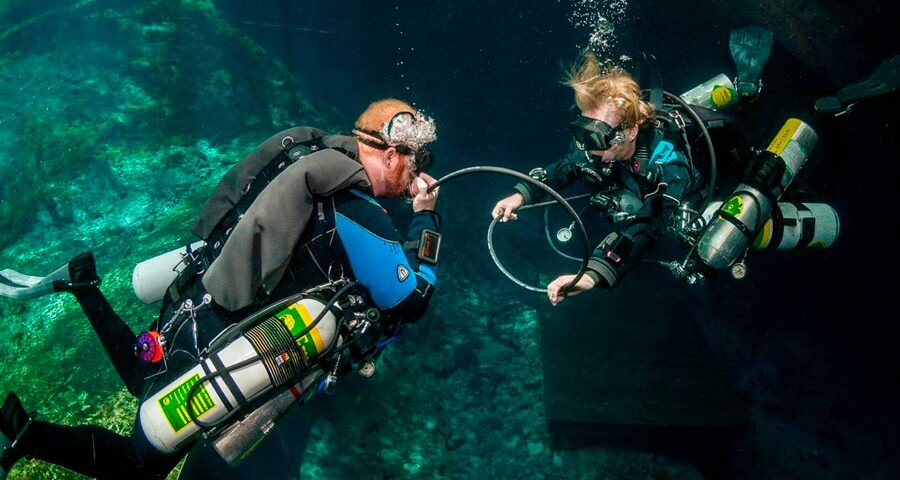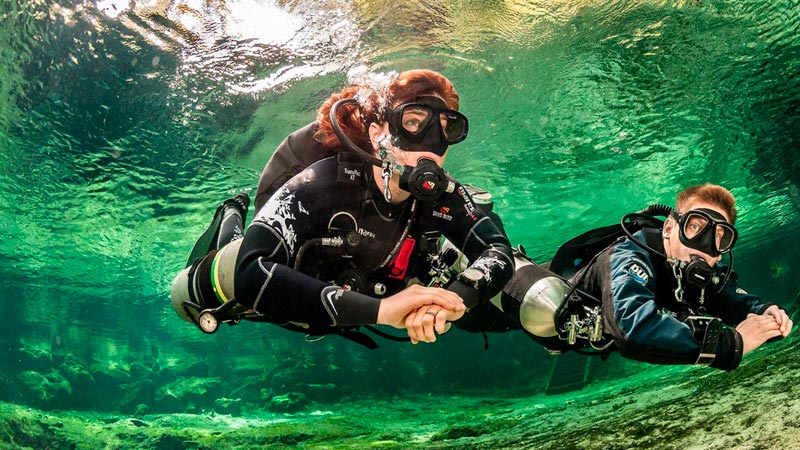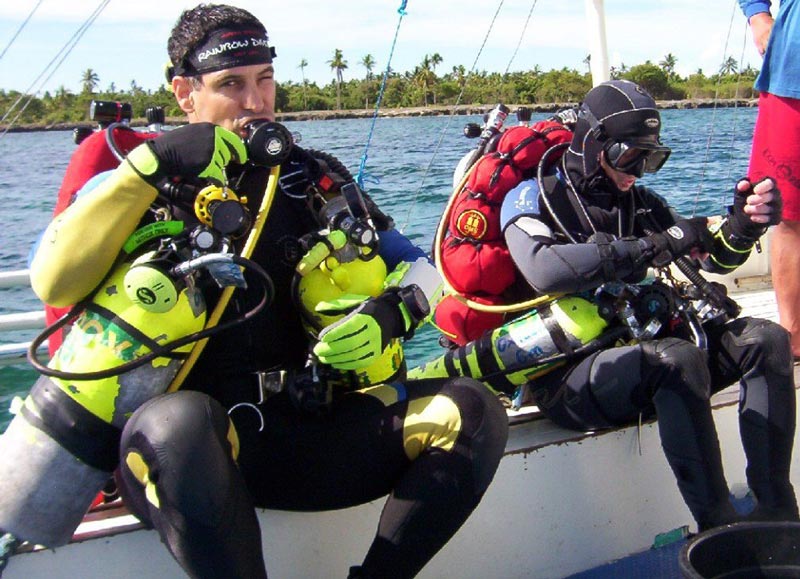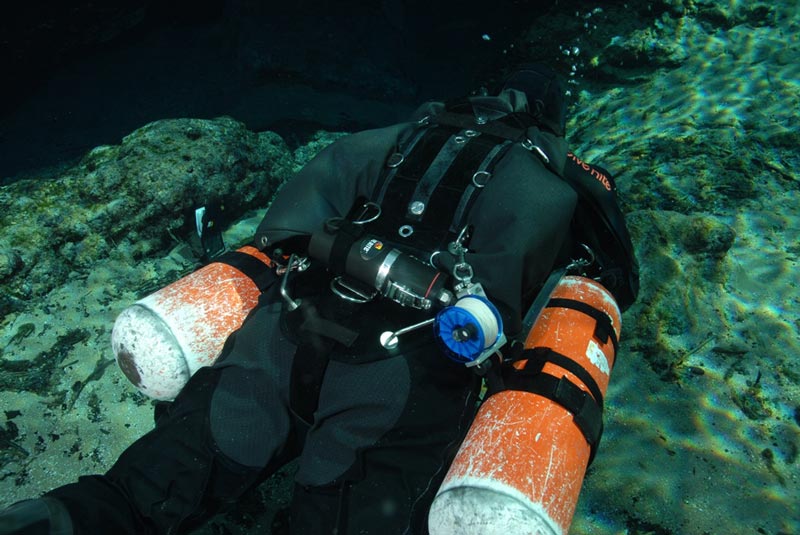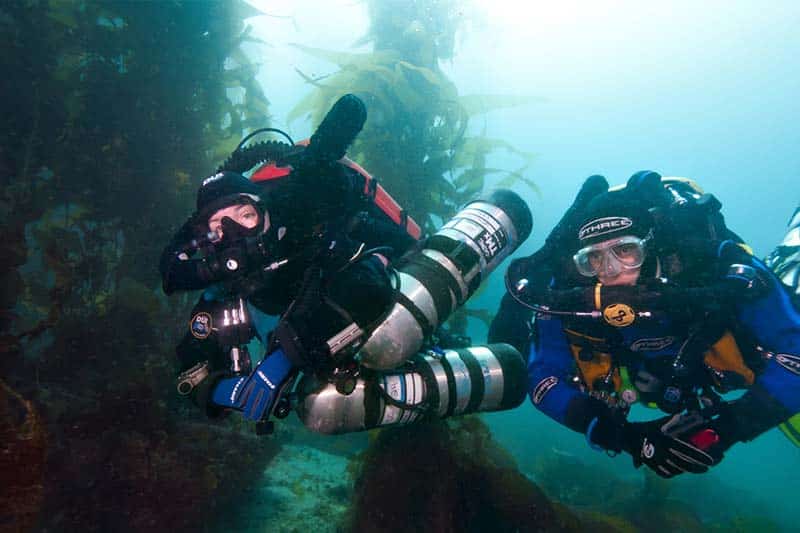When William Hogarth Main, Bill to friends, chose a scuba backplate and wing as the basis for his minimalist configuration, he knew that to solve the problems they faced in cave diving, they had to make the most of what they had and invent what did not yet exist.
That was no easy feat, considering from where they were coming.
Bi-bottles strapped to the body with harnesses, just one regulator, no buoyancy system at all, they used inflated empty bleach bottles to control it…
At that time, scuba divers had to kick without stopping and do it as fast as possible, or they went straight to the bottom.
It got worse when they went into caves because touching the silty bottom meant no visibility. Therefore, they took an empty Clorox bottle, tied it to their gear, filled it with air, and it acted as a BCD.
Incredible, isn’t it? But sometimes the stars come together and something incredible emerges from what seems a total disaster.
In this context, the scuba backplate and wind were born. But let’s not get ahead of ourselves. Let’s first take a look at this article’s content.




